The University of Antwerp is fully committed to greener facades, roofs and other facilities to strengthen biodiversity on its four campuses. Let’s have a look at the flourishing initiatives.
Green facades and roofs
It’s beautiful, it insulates your building, it captures particulate matter and it produces oxygen – these are just a few of the reasons why you’d want your facade to be covered in greenery. Indigenous plants like ivy and Virginia creeper retain water and contribute to biodiversity on campus, as they also attract insects and birds to the facades.
The Environment Office removed several tiles next to the walls of the R building on Stadscampus and planted greenery in the soil, which has already made quite some progress up the facade after one year. The same goes for the nearby S building. And also at building Z on Campus Groenenborger tiles were removed – a project by DavingA, the alumni association for industrial engineering sciences.
On the ground floor of the R building on Stadscampus, which houses a few lecture halls, a green roof was constructed, with colourful mosses that are visible from the classrooms. It’s a great place to get some air as well: simply push apart the sliding doors and there you go.

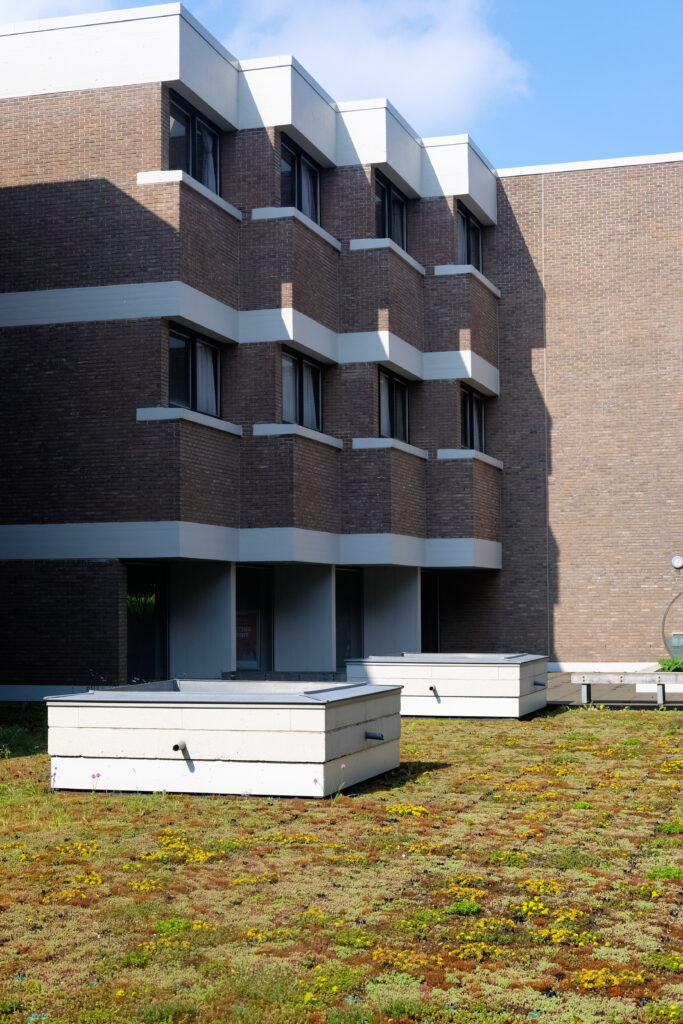

Swift nests at the Paardenmarkt site
The buildings at the Paardenmarkt site, which weren’t connected before, were right in the middle of the flying path of the endangered swift. The migratory bird had built nests in numerous nooks and crannies of the buildings before they were connected by glass footbridges. In consultation with the Agency for Nature and Forests, compensation nests for the swifts were incorporated into the facades at the Paardenmarkt site. There also was a considerable last-minute expansion of the green zone on the inner courtyard and for the planting the university deliberately chose indigenous plants, to promote biodiversity.
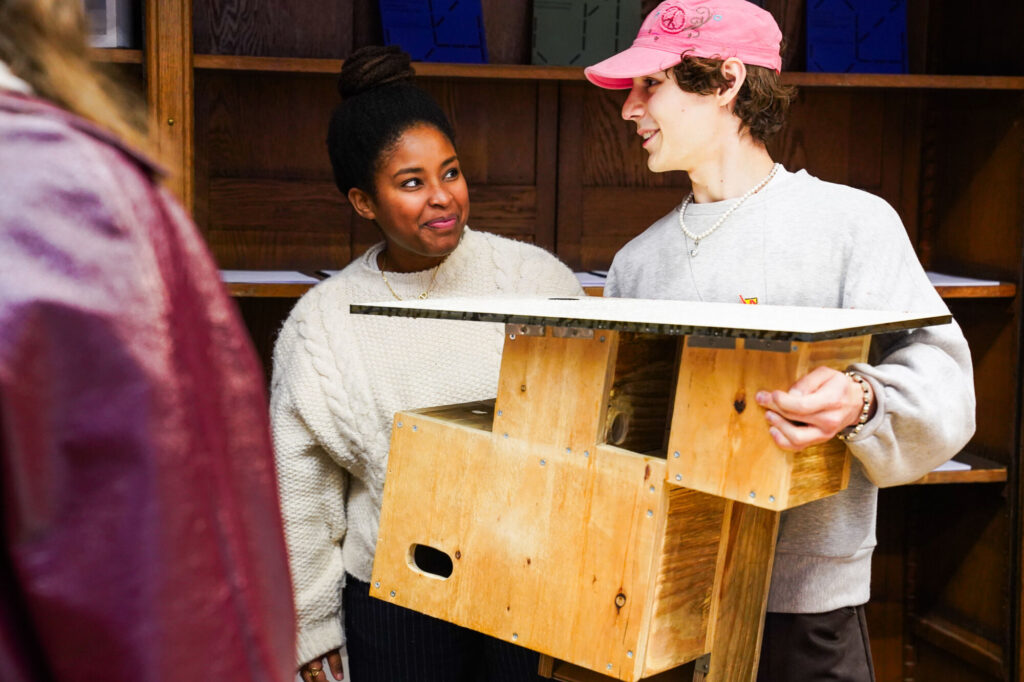
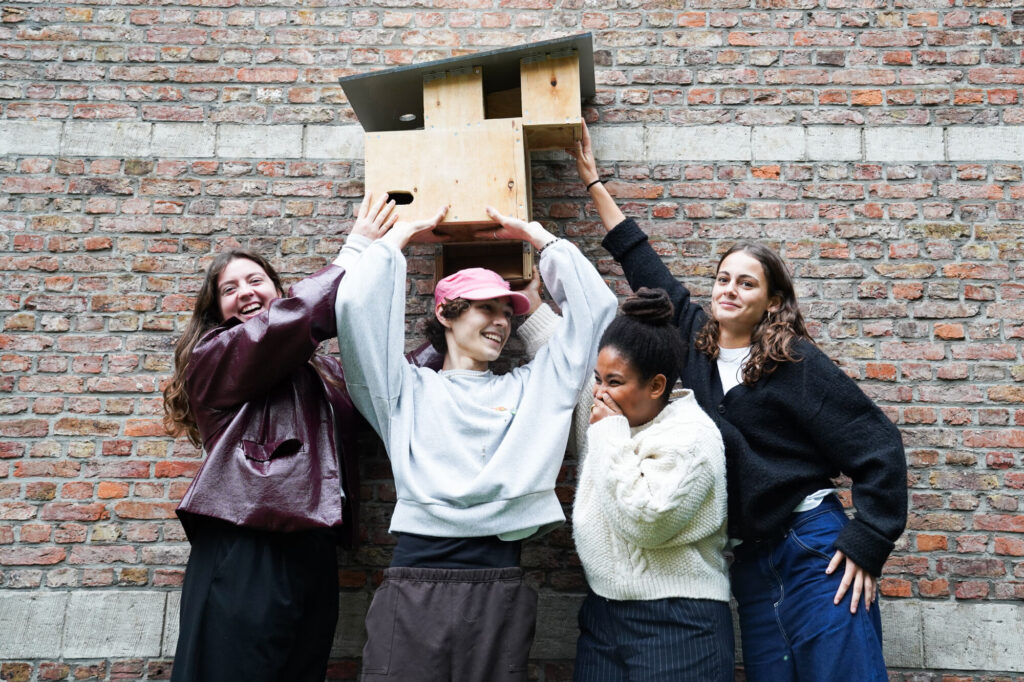
The birds and the beest
At Campus Groenenborger and Campus Drie Eiken, flower meadows were sown in the past years. Not just because they’re pretty, but also because they’re good for the bees. Several local beekeepers have set up shop at Campus Drie Eiken and Campus Middelheim. In the coming academic year, the Department of Veterinary Sciences will roll out a bee project there, with students monitoring the hives for parasites (and other things). According to Jo Leroy from the department, the bees have started to feel right at home there, partly thanks to the nearby lime trees.
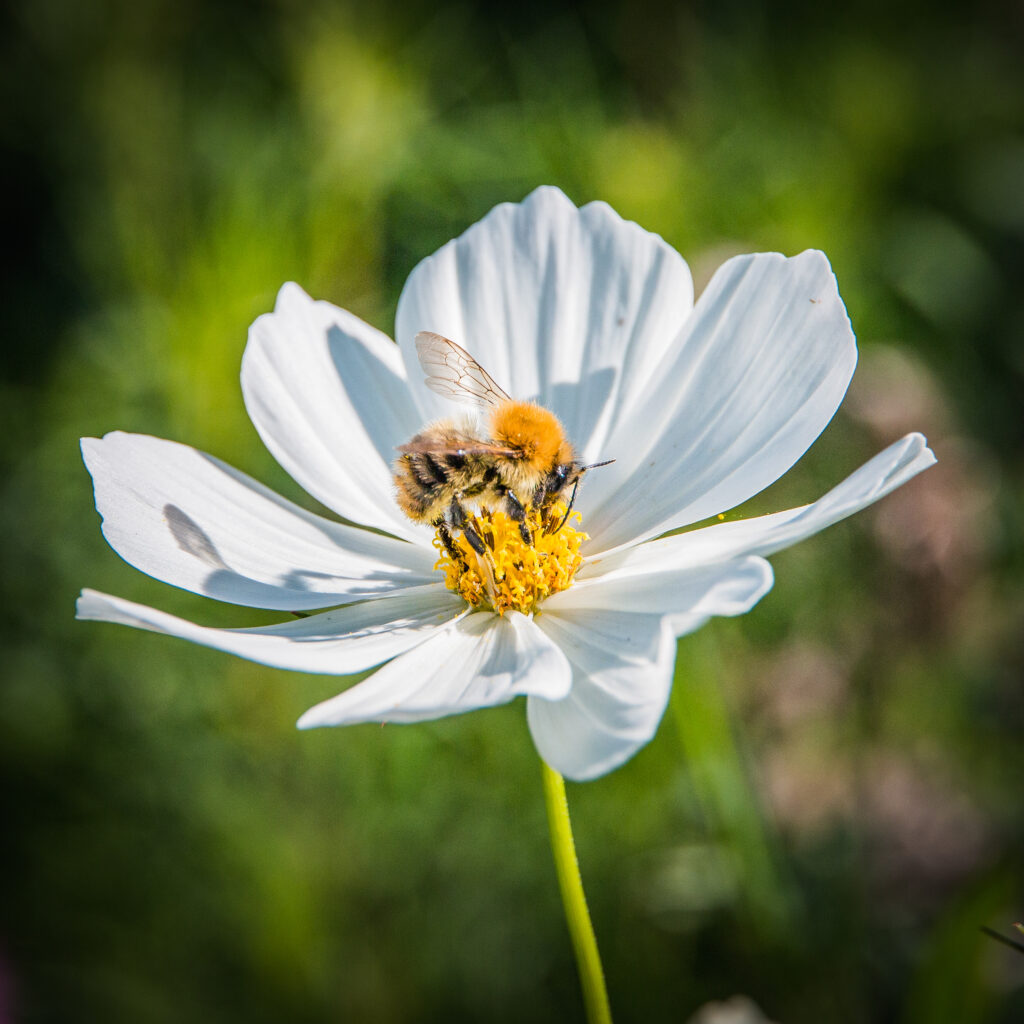
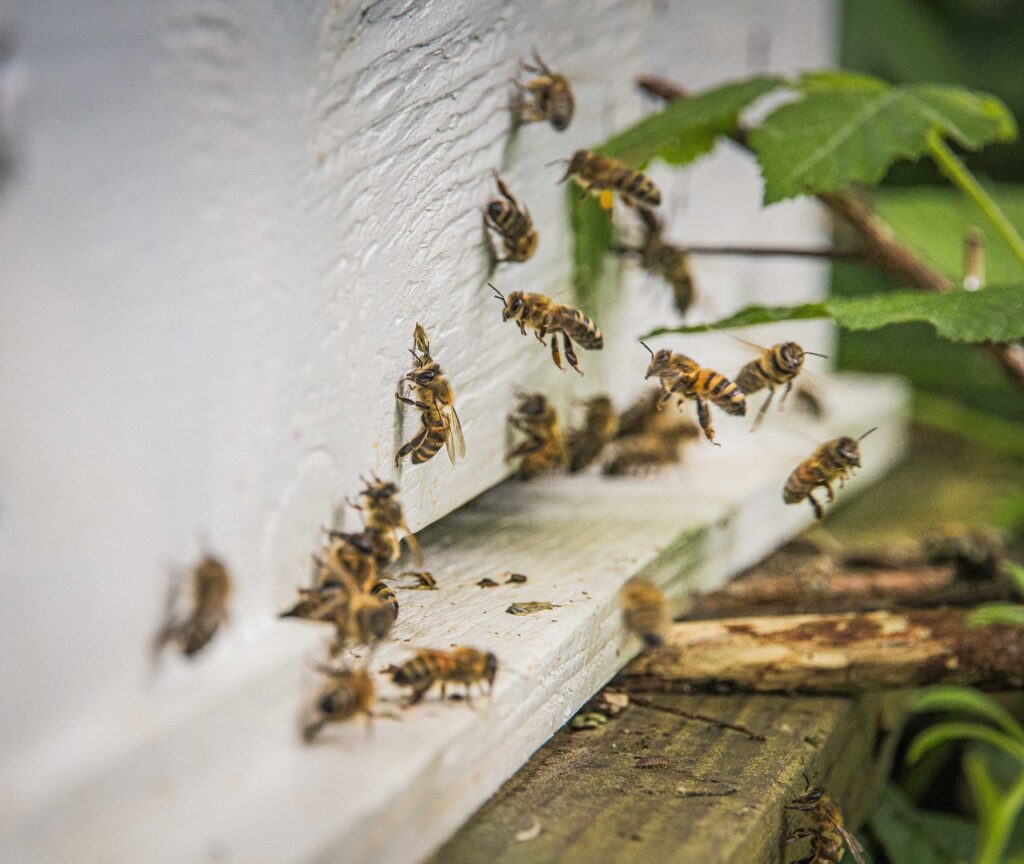
Shade for the mammals
In the hectare of grassland around the Ark, where the cows, horses and sheep kept by Veterinary Sciences graze, around twenty alder trees were placed. These trees were recovered and relocated using state-of-the-art machinery, so now they can provide shade to the animals. Incidentally, pollard willows were also planted on the edge of the grassland. These are ideal to dry up the area in case of flooding and, once they’re a bit bigger, to house all kinds of fauna. And pupils of the Leonardo Lyceum also sowed flower strips to enhance biodiversity.
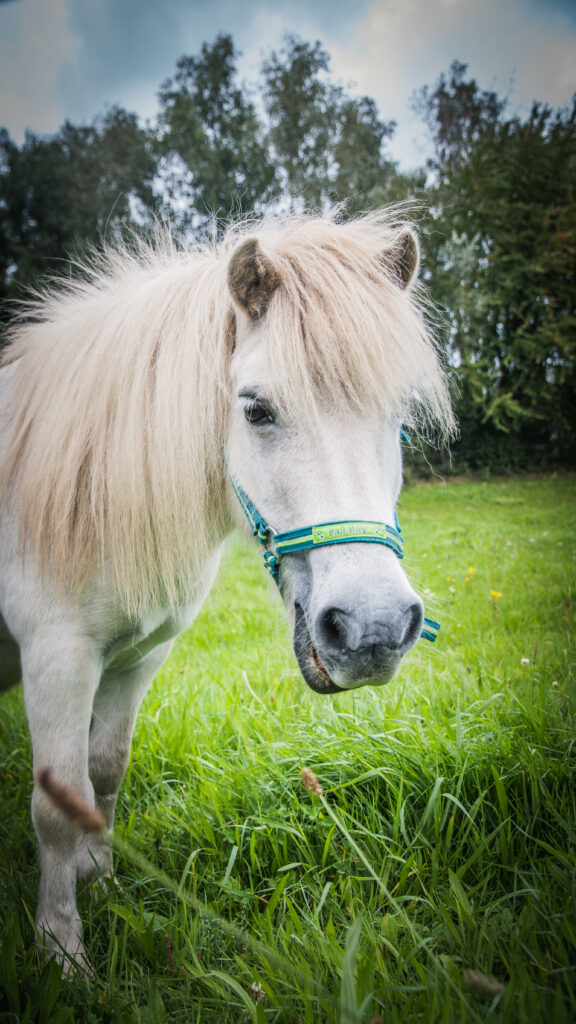
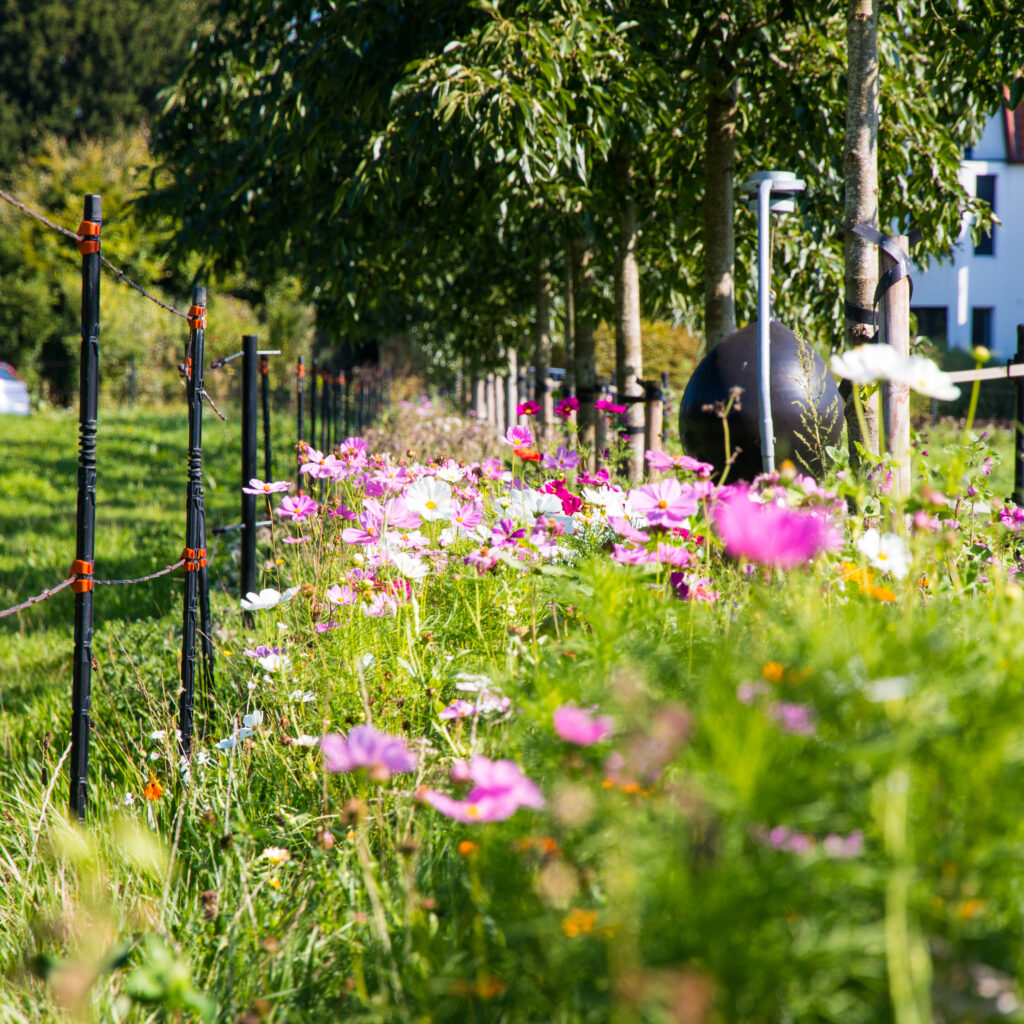

Award for the most biodiverse industrial estate
There are many ponds and canals at Campus Drie Eiken, which aren’t flowing into each other nicely anymore. At the moment, a study is in the works to measure everything and clear up pipes so the cascade system from 1974 can be returned to its former glory. Some of these ponds have already been dredged and a number of banks have been cleared, which is already benefiting the quality of the water. Seeing how quite some water birds make their nests along the banks, no mowing takes place in the breeding season. To keep the grass short in some places, UAntwerp is collaborating with the city shepherd and his sheep. The sheep roam around, carrying different seeds in their hooves, and when they release them they contribute to more biodiversity on the grasslands. It shouldn’t come as a surprise, therefore, that the campus won an award for the most biodiverse industrial estate in 2021.
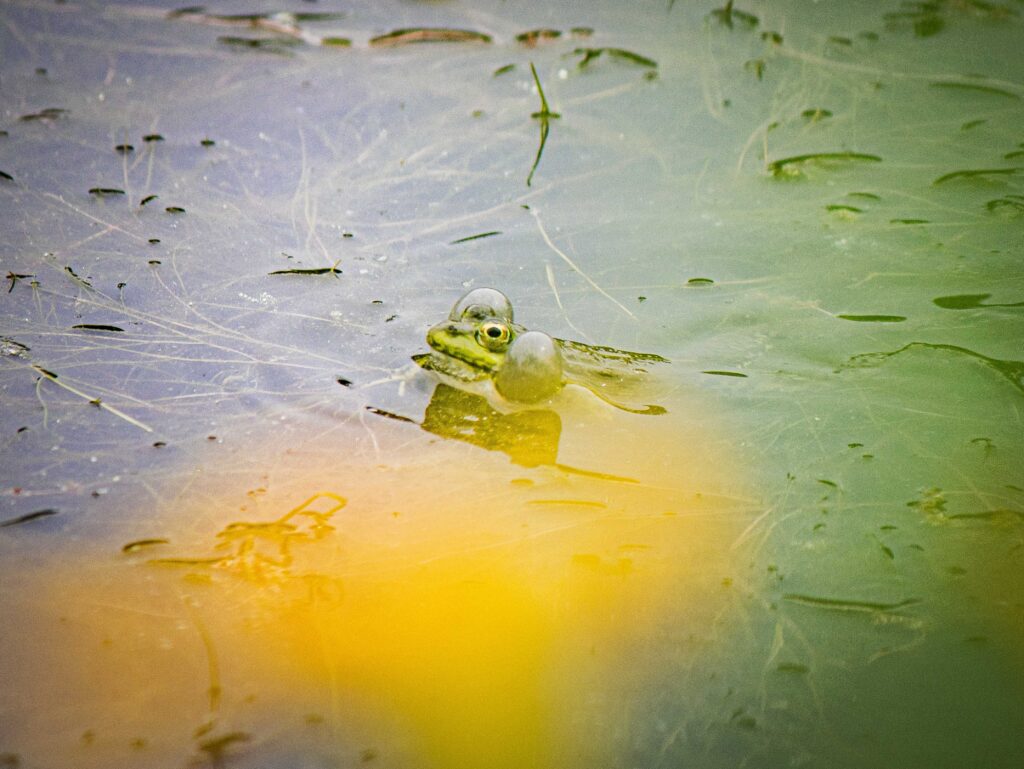

Ready, set, go
UAntwerp was given permission by the government to manage the grasslands between Campus Groenenborger and the Building Z, which is above the Craeybeckx tunnel. Together with staff members, plans are being made to make this green area even more beautiful and biodiverse, including by creating a herb garden and a flower zone.



